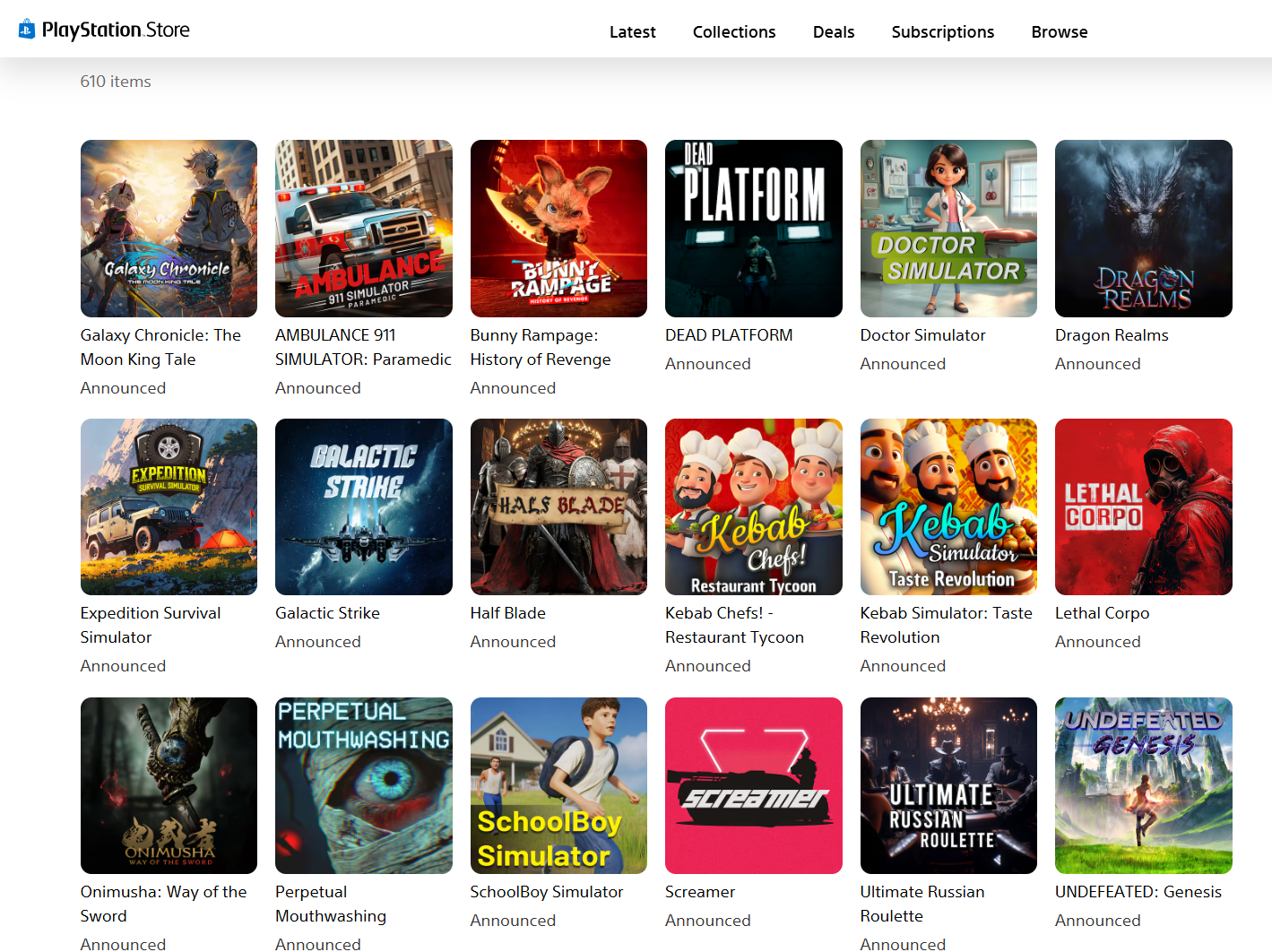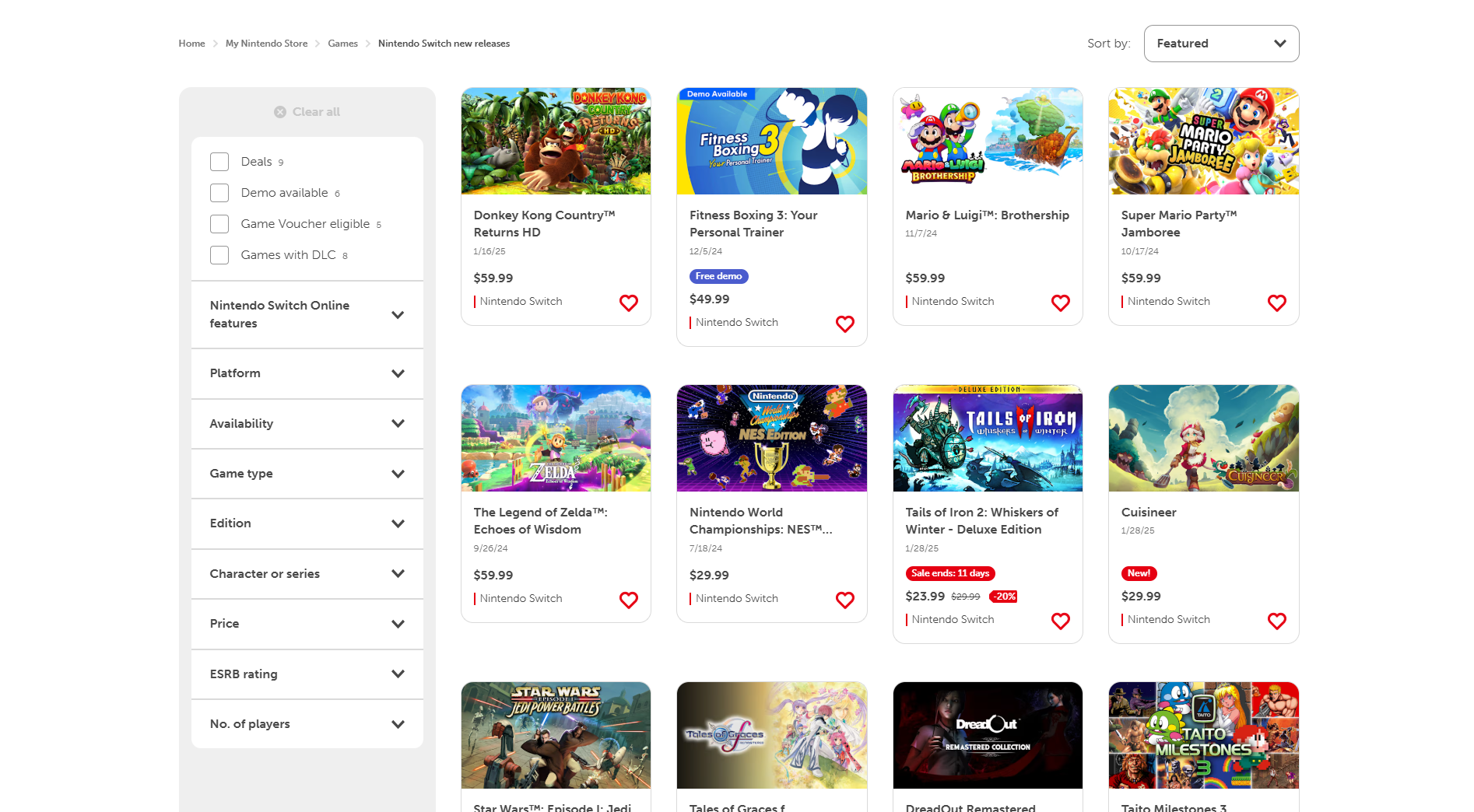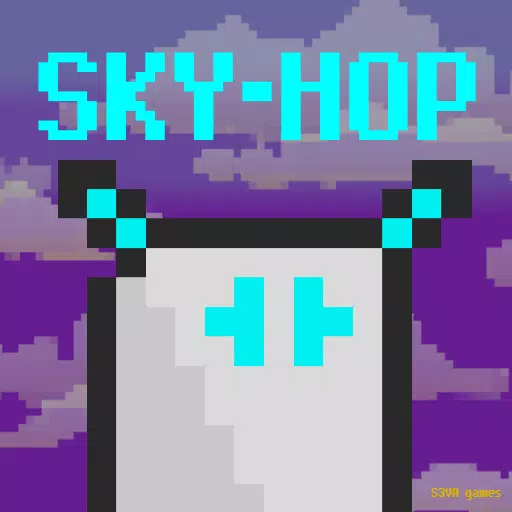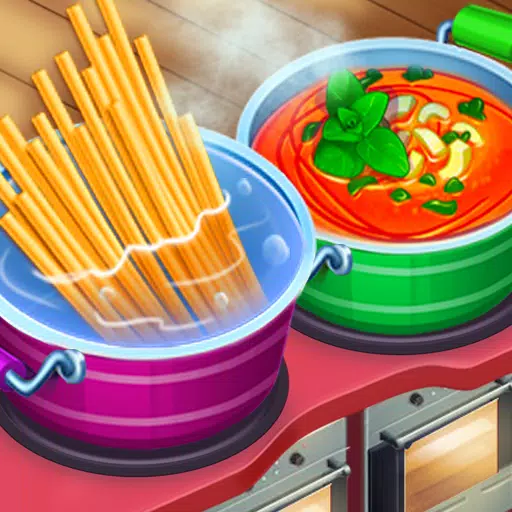There's a peculiar issue brewing on the PlayStation Store and the Nintendo eShop. Over the past few months, these platforms have been increasingly inundated with what gamers are calling "slop." Both Kotaku and Aftermath have shed light on this growing problem, particularly noting how the eShop is being flooded with games that use generative AI and misleading store pages to deceive users into buying low-quality, misrepresented games. This issue has now spread to the PlayStation Store, notably affecting the "Games to wishlist" section with an influx of weird-looking stuff.
These games aren't just substandard; they're part of a deluge of similar-looking titles that are overshadowing other games. The "slop" games are typically simulation games, perpetually on sale, often mimicking themes or outright copying the concepts and names entirely of popular games. They frequently feature hyper-stylized art and screenshots that stink of generative AI, yet in reality, they don't match the promised visuals or gameplay. These games are often glitchy, with poor controls and minimal features, leaving players disappointed.
Moreover, these games are being churned out mercilessly by a small handful of companies. YouTube creator Dead Domain investigated and found these companies elusive, with little to no public information available. Some even change their names frequently to avoid accountability.
The outcry from users of both stores has been growing, demanding better regulation to curb the "AI slop." This is especially urgent given the deteriorating performance of Nintendo's eShop, which is becoming slower as it gets clogged with more games.
To understand how these games are flooding the stores, I spoke with eight individuals in game development and publishing, all of whom requested anonymity due to fear of platform holder reprisal. They have extensive experience releasing games on Steam, Xbox, PlayStation, and Nintendo Switch. Their insights helped clarify the process of getting a game onto these platforms, which might explain why some stores are more affected by "slop" than others.
The Magical World of Cert
The process for all four major storefronts generally involves a developer or publisher pitching to Nintendo, Sony, Microsoft, or Valve to gain access to development backend portals and devkits. They then fill out forms detailing the game's features and technical requirements. The next step is "cert" or certification, where the platform holder checks if the game meets specific technical standards, such as handling corrupted saves or controller disconnections. While Steam and Xbox publish their requirements, Nintendo and Sony do not.
Certification also ensures games comply with legal standards and match their ESRB ratings. Platform holders are particularly strict about age ratings, and any discrepancies can halt a game's release. Contrary to popular belief, certification is not a QA check but rather a verification that the game's code complies with hardware specifications.
If a game passes certification, it's ready for release. If it fails, it must be resubmitted with fixes. However, developers often receive only error codes without detailed feedback, especially from Nintendo, which is known for rejecting games with little explanation.
Front and Center
Platform holders require developers to use screenshots that accurately represent their games, but there's no concrete process for verifying this. Reviews mainly check for competing imagery and correct language. One developer recounted an instance where Nintendo caught a screenshot mismatch, but generally, the store team doesn't have access to game builds, and the cert team doesn't review store pages.
Nintendo and Xbox review all store page changes before they go live, while PlayStation does a single check near launch. Valve reviews the initial store page but not subsequent changes. The diligence in checking store information varies, and developers can often submit misleading content and ask for forgiveness later. The punishment for misleading screenshots is usually just a request to remove the content, with little risk of being delisted unless the offense is severe.
None of the console storefronts have rules about using generative AI, though Steam asks developers to disclose its use without limiting it.
Eshop to eslop
The reasons behind the flood of misrepresented, low-effort sim games on Sony and Nintendo's stores are multifaceted. Unlike Microsoft, which vets games on a per-game basis, Nintendo, Sony, and Valve approve developers, making it easier for approved developers to release multiple games. This system allows a few companies to flood the stores with similar, low-quality games using generative AI assets.
Nintendo's approval process is seen as the easiest to exploit, with developers able to release questionable games that might eventually be taken down. Some developers use tactics like releasing bundles with perpetual discounts to stay at the top of sales and new releases pages, overshadowing other games.
On PlayStation, the "Games to Wishlist" section is sorted by release date, pushing unreleased games to the top, including those with vague release windows. This results in games like "Ambulance 911 Simulator Paramedic" or "Kebab Simulator Taste Revolution" being prominently displayed.
Steam, despite having the most potential "slop," is less criticized due to its robust discovery options and constant refresh of new releases, which quickly buries low-quality games. Nintendo, on the other hand, simply lists all new releases in an unsorted manner.
All Games Allowed
Users have been urging Nintendo and Sony to improve their storefront regulation to combat the flood of similar games. Neither company responded to requests for comment on any plans to address this issue. Developers and publishers are skeptical about significant improvements, especially from Nintendo, though some hope the Nintendo Switch 2 might offer a better experience.
Sony has previously taken action against similar issues, such as in 2021 when it cracked down on "spam" content designed to attract trophy hunters. However, not everyone believes aggressive regulation is the answer. For instance, Nintendo Life's "Better eshop" initiative faced backlash for wrongly categorizing games, highlighting the risks of overly aggressive filters.
Some developers fear that stringent platform regulation might inadvertently target quality games. They emphasize that most developers aren't trying to deceive users, and platform holders are staffed by people trying to balance allowing games to be published with preventing cynical cash grabs.

The 'Games to Wishlist' section on the PlayStation Store at the time this piece was written.

Nintendo's browser storefront is...fine, honestly?














